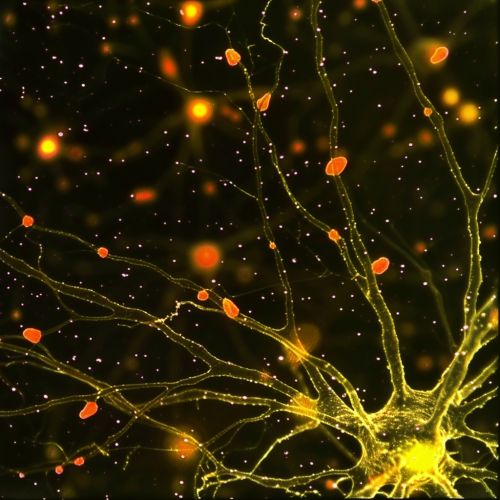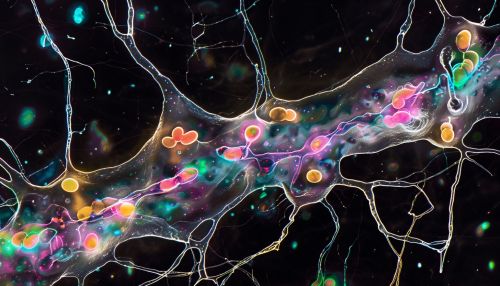Neuropeptide
Introduction
Neuropeptides are small protein-like molecules (peptides) used by neurons to communicate with each other. They are neuronal signaling molecules that influence the activity of the brain and the body in specific ways. They are involved in a wide range of brain functions, including analgesia, reward, food intake, metabolism, reproduction, social behaviors, learning and memory.
Structure and Function
Neuropeptides are typically composed of between 3 and 36 amino acids, and are often post-translationally modified. They are synthesized in the cell body of the neuron and are packaged into vesicles, which are then transported down the axon to the nerve terminal. There, they can be released into the synapse in response to nerve stimulation. Once released, neuropeptides bind to specific receptors on the post-synaptic neuron, triggering a specific response.
Neuropeptides can act as neurotransmitters, neuromodulators, or neurohormones. As neurotransmitters, they are released from a neuron and bind to specific receptors on another neuron, triggering a response. As neuromodulators, they influence the activity of a broad population of neurons rather than just one. As neurohormones, they are released into the bloodstream and can affect cells throughout the body.


Types of Neuropeptides
There are many different types of neuropeptides, each with its own specific function. Some of the most well-known neuropeptides include:
- Endorphins: These are produced in response to stress or pain, and can induce feelings of pleasure or euphoria. - Enkephalins: These are involved in regulating nociception in the body. - Substance P: This is involved in transmitting pain signals to the brain. - Neuropeptide Y: This is one of the most abundant neuropeptides in the brain, and is involved in a variety of processes, including appetite regulation, circadian rhythms, and anxiety responses. - Oxytocin: This is involved in social bonding, sexual reproduction, childbirth, and the period after childbirth.
Role in Disease
Neuropeptides play a significant role in a variety of diseases and disorders. For example, alterations in the function of neuropeptide Y have been implicated in eating disorders and obesity. Similarly, abnormal levels of substance P have been associated with chronic pain and inflammation. In addition, some neuropeptides have been implicated in mental health disorders. For example, alterations in the function of oxytocin have been implicated in autism and social anxiety disorder.
Therapeutic Potential
Given their role in a variety of diseases and disorders, neuropeptides represent potential targets for therapeutic intervention. For example, drugs that mimic the action of endorphins (known as opioid analgesics) are commonly used to treat severe pain. Similarly, drugs that block the action of substance P (known as NK1 receptor antagonists) have been developed for the treatment of depression and anxiety disorders.
However, developing drugs that target neuropeptides can be challenging. This is due, in part, to the fact that neuropeptides often have multiple functions in the body, and altering their activity can have unintended side effects. In addition, neuropeptides are often rapidly degraded in the body, which can make it difficult to develop drugs with a long-lasting effect.
